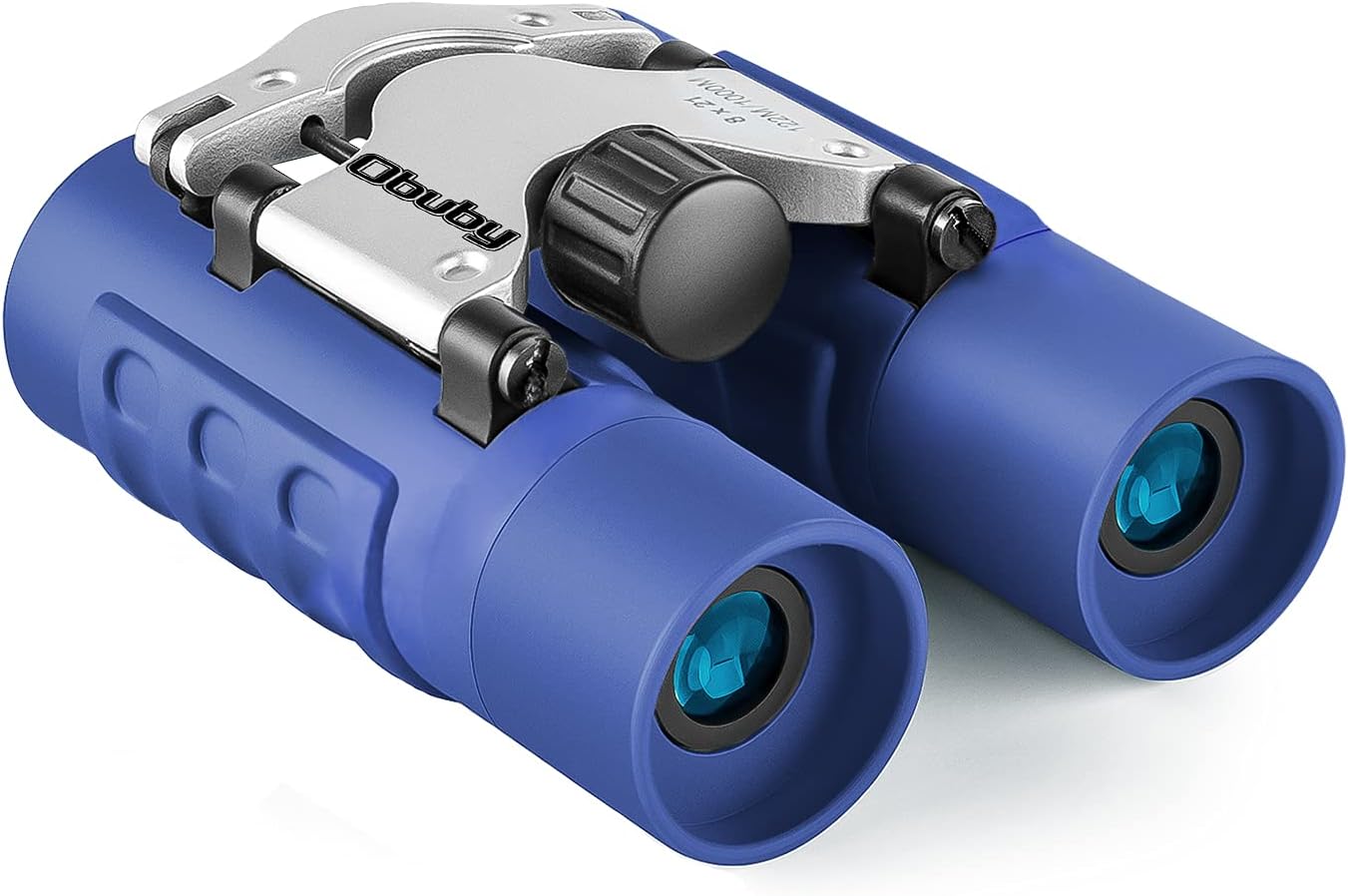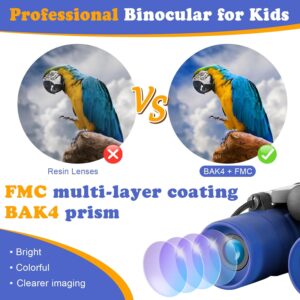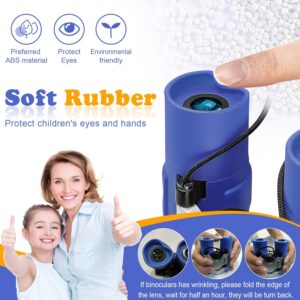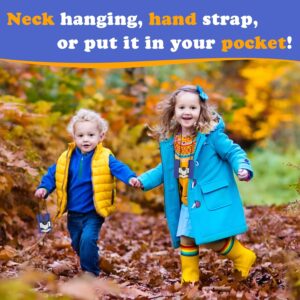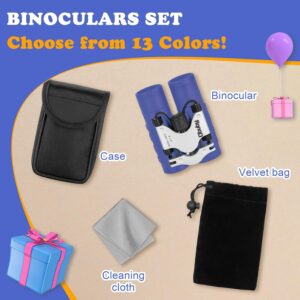The Ultimate Guide to Boys’ Adventure Gear: Binoculars, Telescopes, and Beyond
Introduction
In the realm of boys’ adventure gear, high-quality binoculars and telescopes stand out as essential tools. They not only enhance outdoor experiences but also nurture a child’s curiosity and love for exploration. In this comprehensive guide, we delve into the features, benefits, and top recommendations for boys’ adventure gear, focusing on the best binoculars and telescopes available on the market.
Why Quality Binoculars and Telescopes Matter
Quality binoculars and telescopes are more than just toys; they are instruments that can ignite a lifelong passion for nature and science. These tools provide clear, detailed views of distant objects, allowing boys to observe wildlife, landscapes, and the night sky with unparalleled clarity.
Top Features to Look for in Adventure Gear
High Resolution and Magnification
When choosing binoculars or a telescope, high resolution and magnification are paramount. Look for models with at least 8x magnification for binoculars and 60x for telescopes. This ensures that the images are sharp and detailed, even from a distance.
Durability and Shockproof Design
Adventure gear for boys must withstand rough handling. Opt for binoculars and telescopes that are built with durable, shockproof materials. Rubber armor and sturdy construction can prevent damage from drops and bumps.
Ease of Use
User-friendly features such as adjustable eyecups, focus knobs, and lightweight design make it easier for young adventurers to use their gear effectively. Look for models that are ergonomically designed for small hands.
Waterproof and Fogproof
Outdoor adventures often involve exposure to various weather conditions. Waterproof and fogproof binoculars and telescopes ensure that the lenses remain clear and usable, even in rain or humid environments.
Recommended Binoculars for Boys
High-Resolution Shockproof Binoculars
These binoculars offer a perfect blend of performance and durability. With 10x magnification and a 25mm objective lens, they provide bright, clear images. The shockproof design ensures they can handle the rigors of outdoor play.
Compact Lightweight Binoculars
Ideal for younger children, these binoculars are lightweight and easy to handle. They feature 8x magnification and a 21mm objective lens, providing a good balance of clarity and ease of use.
Waterproof Binoculars
For boys who love water-based adventures, waterproof binoculars are a must. These models come with 12x magnification and a 42mm objective lens, delivering superior image quality even in wet conditions.
Recommended Telescopes for Boys
Portable Refractor Telescope
This beginner-friendly telescope is perfect for stargazing and terrestrial viewing. It offers a 70mm aperture and 400mm focal length, providing clear views of the moon, planets, and distant landscapes.
High Magnification Reflector Telescope
For more advanced young astronomers, a reflector telescope with 114mm aperture and 900mm focal length is ideal. It delivers high-resolution images of deep-sky objects, making it a fantastic tool for serious exploration.
Compact Travel Telescope
Designed for on-the-go adventures, this compact telescope is lightweight and portable. It features a 60mm aperture and 350mm focal length, making it easy to carry and set up in different locations.
How to Choose the Right Gear for Your Child
Consider Their Interests
Determine whether your child is more interested in observing wildlife, landscapes, or the night sky. This will help you choose between binoculars and telescopes, as well as the appropriate specifications.
Assess Their Age and Experience
Younger children may benefit from lightweight, easy-to-use models, while older kids and teens might appreciate higher magnification and more advanced features.
Prioritize Safety and Comfort
Ensure that the gear you choose is safe and comfortable for your child to use. Adjustable straps, padded eyecups, and ergonomic designs can enhance their overall experience.
Maintenance Tips for Longevity
Regular Cleaning
Keep lenses clean by using a soft, lint-free cloth. Avoid using harsh chemicals that can damage the lens coatings.
Proper Storage
Store binoculars and telescopes in a dry, cool place. Use protective cases to prevent dust and moisture from affecting the optics.
Handling with Care
Teach your child to handle their gear with care. Encourage them to use neck straps and carry cases to prevent accidental drops and damage.
Conclusion
Investing in high-quality binoculars and telescopes can significantly enhance your child’s outdoor adventures. By choosing durable, user-friendly, and high-performance gear, you can foster a love for exploration and learning that lasts a lifetime. Whether it’s observing wildlife, exploring landscapes, or stargazing, the right adventure gear can make every outing an unforgettable experience.
By following these guidelines and choosing the best adventure gear for boys, you’ll ensure countless hours of exploration and discovery. Equip your young adventurers with the tools they need to see the world in a whole new way.
Pros and Cons of Boys’ Adventure Gear: Binoculars and Telescopes
Binoculars
Pros
- Portability: Binoculars are generally compact and easy to carry, making them ideal for on-the-go adventures.
- Ease of Use: With simple focusing mechanisms, binoculars are user-friendly for children of all ages.
- Versatility: Suitable for a variety of activities including bird watching, sports events, and exploring nature.
- Immediate Use: Unlike telescopes, binoculars do not require setup and can be used instantly.
- Durability: Many models are designed to be shockproof and waterproof, making them robust for outdoor use.
Cons
- Limited Magnification: Binoculars typically offer lower magnification compared to telescopes, which might not be sufficient for detailed astronomical observations.
- Less Stable Viewing: Handheld use can lead to shaky images, especially at higher magnifications.
- Shorter Viewing Range: While excellent for relatively close objects, binoculars may not provide the range needed for distant celestial bodies.
Telescopes
Pros
- High Magnification: Telescopes offer significantly higher magnification, ideal for detailed views of celestial objects.
- Stable Viewing: Mounted on tripods, telescopes provide a stable platform for extended viewing sessions.
- Long-Range Capabilities: Capable of observing distant planets, stars, and galaxies, telescopes open up vast new realms for exploration.
- Educational Value: Telescopes can spark a deep interest in astronomy and science, encouraging learning and curiosity.
Cons
- Portability Issues: Telescopes are generally bulkier and require more effort to transport and set up.
- Complexity: They can be more challenging to use, with a steeper learning curve for aligning and focusing.
- Fragility: Telescopes often have delicate components that need careful handling and maintenance.
- Cost: High-quality telescopes can be expensive, which might be a barrier for some families.
By weighing these pros and cons, you can make an informed decision on whether binoculars or telescopes are the best fit for your child’s adventurous needs and interests.
Frequently Asked Questions (FAQs) About Boys’ Adventure Gear: Binoculars and Telescopes
Binoculars
Q1: What magnification is best for children’s binoculars?
A: For children, binoculars with 7x to 10x magnification are ideal. This range provides clear and stable images while being easy to handle.
Q2: Are binoculars safe for young children to use?
A: Yes, many binoculars are designed specifically for children with safety features such as rubberized bodies, adjustable eyecups, and lightweight construction to ensure safe and comfortable use.
Q3: Can binoculars be used in low-light conditions?
A: Yes, binoculars with a larger objective lens (e.g., 42mm or more) can gather more light, making them suitable for use in low-light conditions such as dawn or dusk.
Q4: How do I teach my child to use binoculars properly?
A: Start by showing them how to adjust the focus and the eyecups. Encourage them to use the neck strap and to handle the binoculars gently. Practice spotting distant objects together to help them get comfortable with the process.
Telescopes
Q1: What type of telescope is best for beginners?
A: A refractor telescope with a 70mm aperture is great for beginners. It’s easy to set up and use, providing clear views of the moon, planets, and terrestrial objects.
Q2: How do I align a telescope for stargazing?
A: First, set up the telescope on a stable surface and ensure it’s level. Use the finderscope to locate a bright object, then adjust the main telescope to center the object in the eyepiece. Fine-tune the focus for a clear view.
Q3: Can telescopes be used during the day?
A: Yes, telescopes can be used during the day for terrestrial viewing, such as observing landscapes or wildlife. However, never point a telescope directly at the sun without a proper solar filter.
Q4: What accessories are essential for a beginner’s telescope?
A: Essential accessories include a sturdy tripod, additional eyepieces for varying magnifications, a finderscope, and a star map or astronomy app to help locate celestial objects.
General Adventure Gear
Q1: How do I maintain and care for binoculars and telescopes?
A: Regularly clean the lenses with a soft, lint-free cloth. Store the gear in a dry, cool place, preferably in a protective case. Avoid exposing the lenses to extreme temperatures or moisture.
Q2: What is the difference between waterproof and water-resistant gear?
A: Waterproof gear can be fully submerged in water without damage, while water-resistant gear can withstand light rain or splashes but should not be submerged.
Q3: Are there any safety concerns with using these devices?
A: Ensure children are supervised when using telescopes, especially when observing the sun. Teach them to handle the equipment carefully to avoid drops and damage. Always use neck-straps for binoculars to prevent accidental falls.
By addressing these frequently asked questions, you can better understand how to choose and use binoculars and telescopes for your child’s adventures, ensuring a safe and enjoyable experience.

